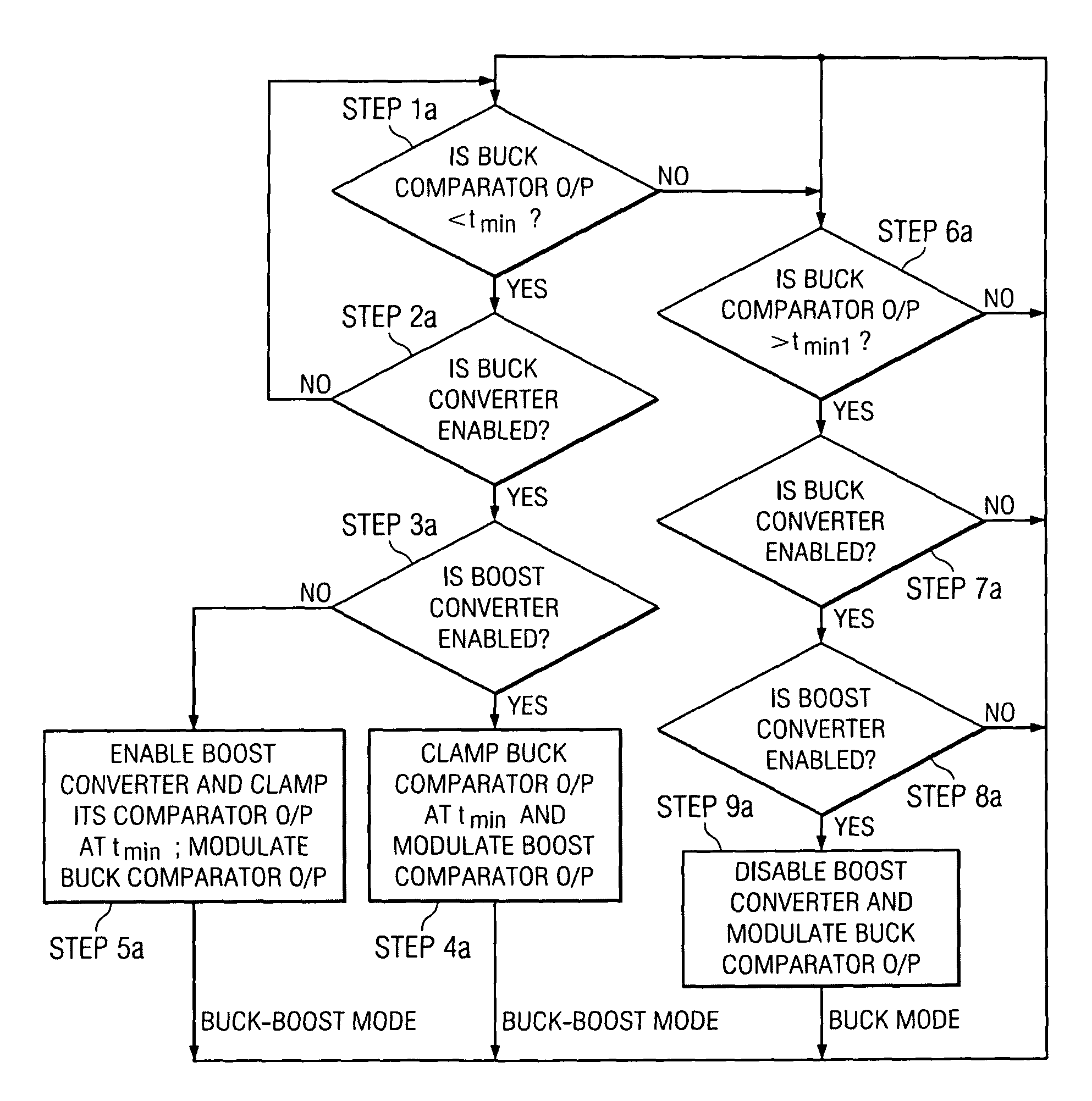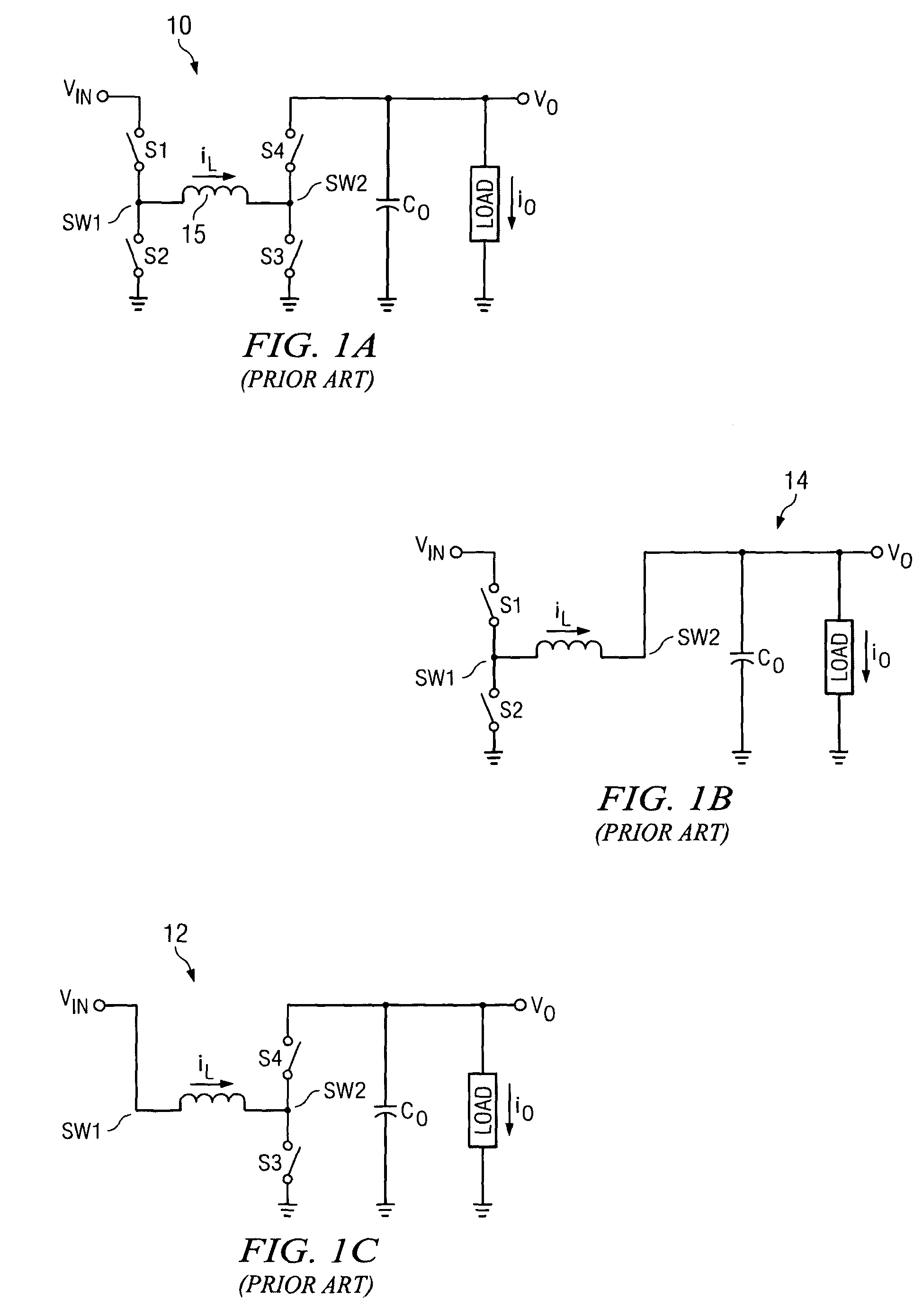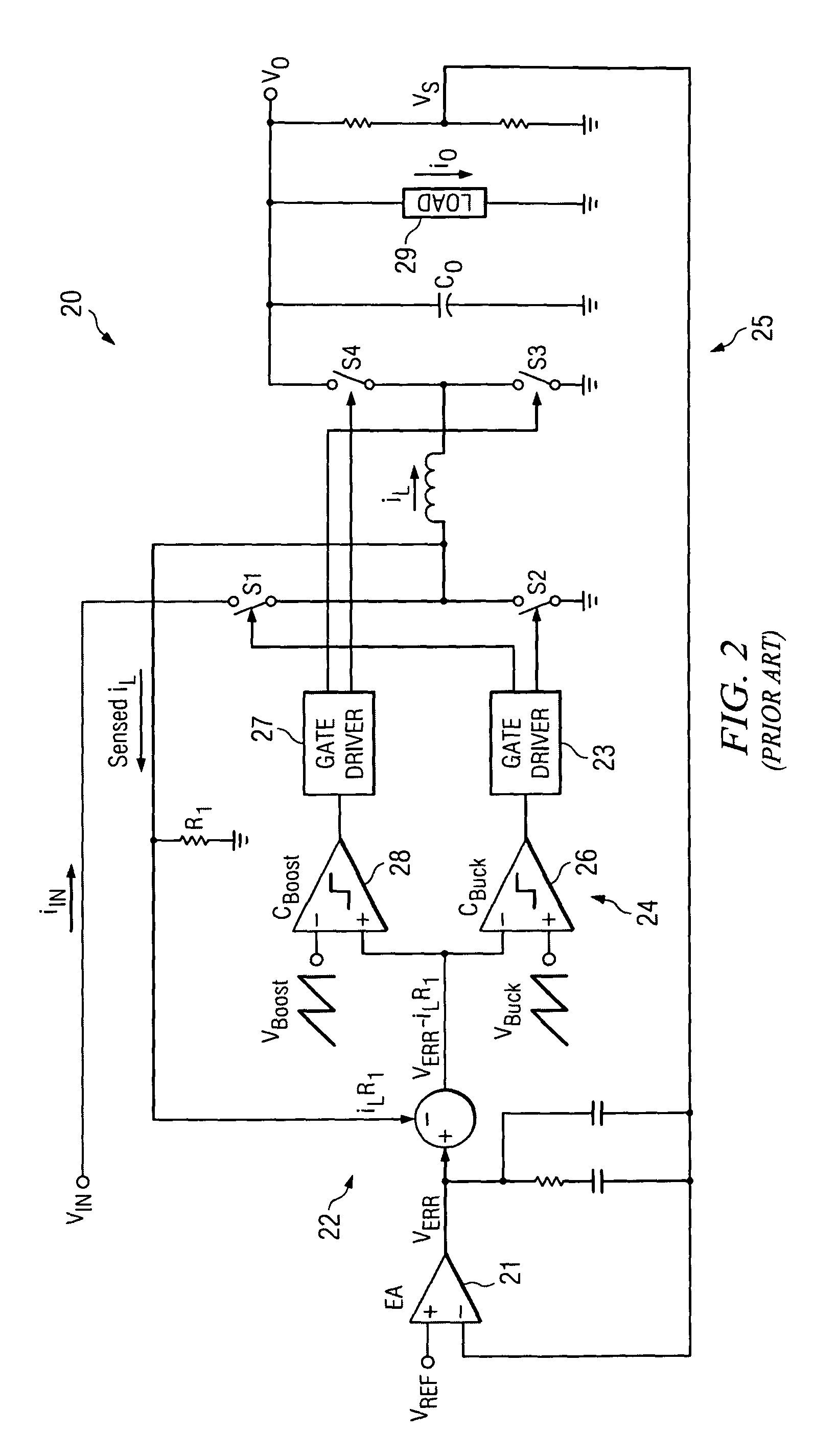Multiple switch node power converter control scheme that avoids switching sub-harmonics
a control scheme and switch node technology, applied in power conversion systems, dc-dc conversion, pulse techniques, etc., can solve the problems of buck-boost mode, buck-boost mode, buck-boost mode, etc., to eliminate any sub-harmonic switching and generate surplus energy
- Summary
- Abstract
- Description
- Claims
- Application Information
AI Technical Summary
Benefits of technology
Problems solved by technology
Method used
Image
Examples
Embodiment Construction
[0062]A method of and system for controlling a multiple switch node power converter that avoids switching subharmonics is disclosed. More particularly, a method of and system for controlling a multiple switch node power converter that does not require overlapping the boost and buck modulation ramps during buck-boost mode is disclosed.
[0063]Buck-boost power conversion mode occurs when the input voltage, VIN, and the output voltage, VO, are equal or substantially equal in magnitude. In contrast with pure buck or pure boost modes in which the complementary switching pair at one switch node are switched ON and OFF during the switching cycle and the complementary switching pair at another switch node are not switched, i.e., either ON or OFF for the entire switching cycle, during buck-boost mode, the complementary switching pair at both switch nodes are switched ON and OFF during some portion of the switching cycle. However, advantageously, according to the present invention, only one of ...
PUM
 Login to View More
Login to View More Abstract
Description
Claims
Application Information
 Login to View More
Login to View More - R&D
- Intellectual Property
- Life Sciences
- Materials
- Tech Scout
- Unparalleled Data Quality
- Higher Quality Content
- 60% Fewer Hallucinations
Browse by: Latest US Patents, China's latest patents, Technical Efficacy Thesaurus, Application Domain, Technology Topic, Popular Technical Reports.
© 2025 PatSnap. All rights reserved.Legal|Privacy policy|Modern Slavery Act Transparency Statement|Sitemap|About US| Contact US: help@patsnap.com



